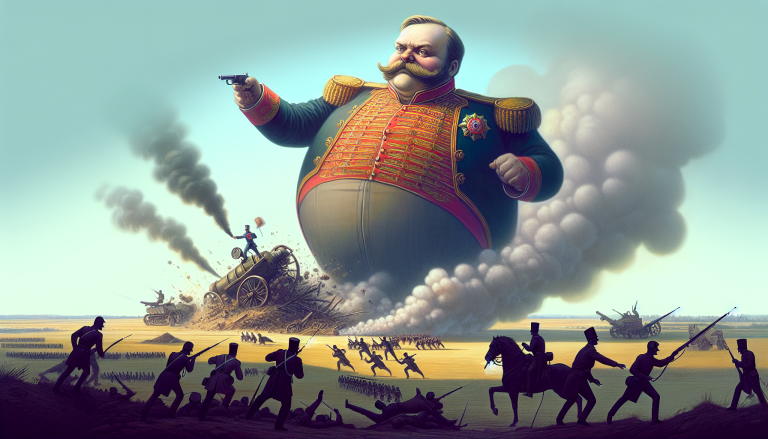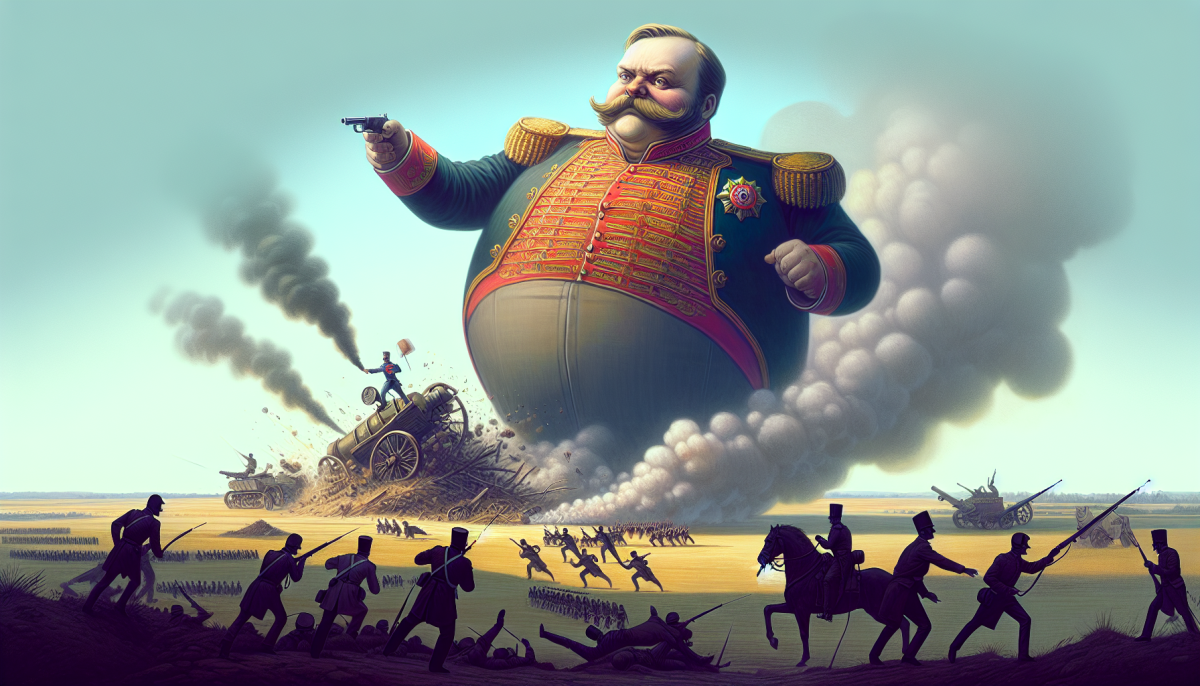When Folly Becomes Farce: The Hilarious Misadventures of General Custer
History is full of tales of human folly and futile endeavors, but few can match the sheer comedic genius of General George Armstrong Custer’s infamous “battle” at the Little Bighorn. This legendary blunder, often described as “beating a dead horse,” has become the stuff of legend, a cautionary tale of hubris, incompetence, and the relentless pursuit of a lost cause.
The year was 1876, and Custer, a flamboyant and ambitious cavalry officer, had his sights set on a decisive victory against the Native American tribes of the Great Plains. His plan was simple: Divide his troops and converge on the Sioux and Cheyenne encampments, overwhelming them with his superior numbers and firepower. What could possibly go wrong?
As it turns out, just about everything. Custer’s bold maneuver quickly descended into a chaotic mess, with his overconfident troops scattered and outnumbered by the skilled and battle-hardened warriors of Sitting Bull and Crazy Horse. The resulting slaughter, now known as the Battle of the Little Bighorn, has become a testament to the power of hubris and the folly of “beating a dead horse.”
The Misadventures of General Custer: A Satire of Epic Proportions

Custer’s misadventures at the Little Bighorn have long been a source of amusement and ridicule, with countless satirical accounts and humorous retellings poking fun at his doomed campaign. One particularly hilarious take comes from the pen of the late, great Mark Twain, who famously quipped, “Custer had brains, but he couldn’t find them.”
In his signature style, Twain weaves a tapestry of comedic gold, painting Custer as a hapless buffoon whose arrogance and thirst for glory knew no bounds. “It was Custer’s last stand, and it was also his first stand,” Twain wrote, “for he had never stood before in his life – he had always polkaed.”
The author’s biting wit and keen eye for the absurd turn Custer’s downfall into a laugh-out-loud spectacle, with the general himself as the unwitting star of the show. “Custer,” Twain wrote, “was the only person in that crack-brained expedition who was not astonished when he found himself in an entirely new and unpopular environment.”
The Immortal Cartoon that Captured Custer’s Folly
The futility of Custer’s efforts at the Little Bighorn has also found its way into the world of political cartoons, where the “beating a dead horse” metaphor has been used to devastating effect. One particularly memorable example is the work of the renowned satirist Thomas Nast, whose 1876 cartoon “Custer’s Last Charge” perfectly captures the essence of this historic blunder.
In the cartoon, Nast depicts Custer as a quixotic knight, his lance raised in a vain attempt to vanquish a towering, skeletal “horse” – a metaphor for the futility of his campaign. The general’s expression is one of determined yet comical obliviousness, as if he’s utterly convinced of his ability to prevail against all odds.
Surrounding Custer are the battered and bewildered remnants of his command, their faces etched with a mixture of terror and resignation. The overall effect is both hilarious and poignant, a scathing indictment of Custer’s reckless disregard for the lives of his men and the realities of the battlefield.
Lessons Learned (or Not): The Enduring Legacy of Custer’s Folly
Despite the endless stream of mockery and satire that has followed in the wake of Custer’s debacle, one might think that the lessons of this historic blunder would have been firmly ingrained in the minds of military planners and political strategists. Alas, the tendency to “beat a dead horse” – to stubbornly pursue a futile course of action in the face of overwhelming evidence – remains all too common.
From the disastrous Bay of Pigs invasion to the quagmire of the Vietnam War, history is littered with examples of leaders who, like Custer, have been unwilling or unable to heed the lessons of the past. And in an age of social media and instant communication, the opportunities for such folly to be immortalized in hilarious fashion have never been greater.
As we reflect on the enduring legacy of Custer’s Last Stand, perhaps we can take solace in the knowledge that, even in the face of tragedy and defeat, the human capacity for laughter and satire remains a powerful force. After all, as Mark Twain himself once said, “Against the assault of laughter nothing can stand.”
